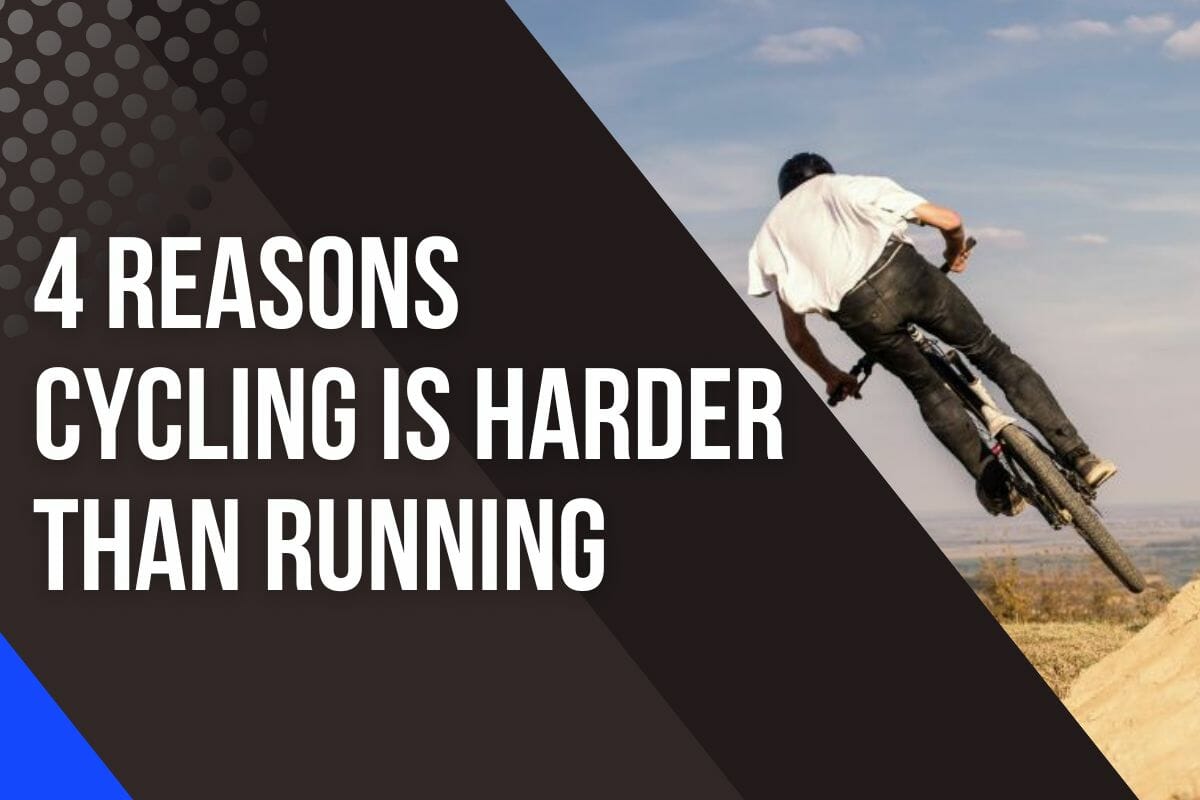Why Do Cyclists Keep Cycling After A Race? Smart Recovery Trick

Cyclists know that their performance in a race is highly reliant on how they take care of their legs.
Therefore, even after crossing the finish line, cyclists continue to ride their trainers in order to actively recover from the energy expended during the race.
This type of recovery helps to quickly break down lactic acid build-up and clear waste products of muscular strain from the cyclist’s legs.
Studies have shown that roughly 15 minutes of cycling post-race is all that is needed for this kind of recovery process to take place effectively.
This additional exercise not only removes lactic acid but also helps strengthen cyclists’ muscles even further, preparing them for the next big event.
Below, we’ll discuss further the advantages of cycling after a race and pro tips to recover properly.
The Benefits Of Post-Race Riding
After crossing the finish line, I’m usually exhausted and ready to take a break.
But that’s not what professional cyclists do.
Instead, they get right back on their bikes and keep pedaling for another few minutes or longer—even though they’ve been riding all day already!
It may seem counterintuitive to some, but there are actually several advantages to cycling after the race.
Firstly, it keeps the muscles moving and helps remove lactic acid buildup in them which would otherwise sap energy from movements.

Additionally, it can help improve the performance of the cyclists the next day as they recover and refuel their muscles overnight having done some extra work after the race has finished.
This enables them to be at their best as long as they can maintain a certain level of activity during the period between stages.
During periods like this, natural fatigue sets in for athletes which makes it harder for them to press on but this is offset by understanding that such an effort can potentially save them in the long run.
That’s why most professional cyclists recognize the importance of these post-race cycles and actually find energy when knowing that such an effort will pay off further down the track.
After all, fresh legs are what wins races so they put in extra effort in order to maximize future performance just that little bit more.
How Long Should I Cycle After A Race?
I’ve been a competitive cyclist for many years now, and one question I get asked all the time is “How long do you cycle after a race?”.
According to Keith Flory, former Director of Performance at American World Tour team Cannondale, it’s usually about 10-15 minutes of low-intensity cycling at around 150 watts.

In that time, we’re able to cool down gradually, and aids in muscular recovery by increasing circulation and reducing lactic acid buildup that may cause me to tire faster between intervals during training rides or races.
This decreases inflammation, which can lead to improved fitness over time.
Overall, these few minutes of cycling post-race have made a noticeable difference in my performance over time.

For professional cyclists, once they’ve finished cooling off and are rested again, top finishers usually have media commitments before heading back to the team buses.
The rest of the cyclists pack up their gear and head back for some recovery and rest.
British Team Sky Pioneered The Post-Race Recovery Routine
Riders used to drink alcohol during a race as a means of celebration, but have since realized that this practice is not always the best choice for recovery.
In addition, helmets were once laughed at but are now standard equipment for added safety.
In the last decade, there have been further developments in cycling post-race.
Cooling down became popular due to its efficacy and was driven forward by British Team Sky and Bradley Wiggins’ endorsement of it.

The British Sky Team was the best team in the world for almost a decade.
Competitive cyclists soon realized that the fact that Bradley and his team members keep cycling after the race for recovery made all the difference.
Active recovery efforts are now an integral part of any cyclist’s training process as they help with quick recovery while also reducing any potential injury risks associated with overexertion during an intense bike ride.
The right kind of recovery strategy can ultimately be the difference between winning or losing a race and is something all cyclists should take seriously no matter their level of experience.
Should I Also Keep Cycling After My Ride?
For hobbyists and amateur cyclists, cycling after your ride is still recommended but it doesn’t need to be too intense or long.
A steady effort of around 3 to 5 minutes should do the trick and help flush out any waste products that have built up during your ride while restoring glycogen stores so you’re ready for your next one!

For professional cyclists, cycling after their ride is even more important as they need to quickly start their recovery process to prepare for their next race or stage.
Professional riders will usually have a team car nearby with recovery drinks for them to consume during or after their post-race ride.
They may also plan specific training rides afterward in order to maintain their energy levels and work on any areas of weakness that were exposed during the race.
Pro Tips To Recover After A Cycling Race
After a long race, proper recovery is essential to prevent injury and ensure that you’re ready for your next ride.
By following the tips below for post-race recovery, you can ensure that you keep pedaling safely and efficiently for many more miles ahead!
1. Stop Gradually
Many cyclists might wonder why they should bother to cool down before ending a ride.
Cooling down can be just as important as warming up in order to maintain performance levels and promote recovery time.
Cooling down is necessary because it helps your body transition from intense physical activity into rest mode.

When cycling, your heart rate increases significantly during the race due to increased blood flow throughout your body.
After you finish racing, you need some time for your heart rate to return back to normal so that all the muscles involved in cycling can relax and recover properly.
Therefore, you need to keep cycling slowly for the next 3 to 5 minutes after the race.
A proper cool-down period would involve slowing one’s speed gradually, breathing deeply, and stretching out any tightness or soreness in the muscles used during cycling.
2. Stay Active After Cooling Down
Once you complete your cool-down period and are off the bike, make sure to keep moving.
This is an important part of the recovery process, as it helps reduce muscle stiffness and soreness.

Instead of heading straight for the team bus or cars, take the time to walk around a bit, stretching out any tight spots in my body and shaking out any cramps or knots that have formed.
Moving your body helps improve recovery by increasing blood flow throughout the muscles that were worked during the race.
This enables them to rebuild faster and become stronger.
3. Always Stay Hydrated
Hydration is an essential part of the post-race recovery routine.
After a long race, make sure to drink plenty of water and electrolytes in order to replenish the fluids lost during physical activity.

It’s important to rehydrate as soon as possible after a race, so always carry a bottle with you on your cool-down lap around the course.
Drinking up helps reduce muscle soreness and fatigue, while also lessening the risk of injury or illness in the days following the race.
Additionally, staying hydrated helps keep your blood flow optimal, which allows more oxygen to reach my muscles and aids in their recovery process.
4. Supercharge Your Recovery With Protein
During an intense race, such as a mountain stage or a flat stage, your muscles take quite a beating and need fuel in order to repair themselves.
Always make sure to re-fuel with protein to help rebuild muscle tissue and replenish energy levels.
I usually keep energy bars and snack bars on the team bus or in the team cars so that I can grab something quickly when I finish the race.
Occasionally, after particularly long races, I’ll have a recovery shake made with real foods like nut butter and banana that’s high in protein and carbohydrates.

Eating this helps me restore my glycogen stores and get additional vitamins and minerals that may have been lost during physical activity.
No matter what kind of protein you consume post-race, it should be part of a comprehensive diet plan that includes carbohydrates and healthy fats as well.
Eating balanced meals will keep your energy levels up and help with overall performance throughout training sessions.
It doesn’t have to take much effort – just include some sources of quality protein into your daily regimen!
Your body will thank you during those tough races if you do.
5. Try Compression Socks
Compression socks help promote blood flow throughout my legs which helps reduce muscle soreness and fatigue by allowing oxygen-rich blood to circulate faster.
This helps speed up the recovery process and can even help prevent injury in the future.
6. Get A Rejuvenating Massage (My Favorite)
After long and grueling stages, my muscles are often left feeling exhausted and sore.
That’s why I always make sure to get a massage at least once a week.
Massaging your legs helps to push out the fluids that carry waste products during muscle breakdown, improving circulation and allowing fresh blood to flow more easily for repair.

It can also help break up knots that may form in your body from overuse.
My massage therapist has taught me some simple techniques I can use while on the road such as using mini foam rollers or tennis balls tucked into socks – which can be helpful if I’m unable to get access to a professional masseuse.
He also suggests hot/cold contrast showers which increase circulation and helps reduce swelling in between massages.
Massage is an essential part of any cyclist’s recovery routine, whether it’s professional or recreational riders.
Not only does it help improve circulation, speed up recovery time, and reduce muscle soreness but it is also incredibly effective at reducing stress levels, promoting mental clarity, and improving overall well-being!
7. Get A Lot Of Sleep
The intensity of your rest has to be equivalent to the intensity of your workout.
The harder you exercise, the longer your rest should be.
After a grueling race, try to get at least 7 to 9 hours of sleep every night and take 30-minute power naps during the day if possible.
This helps your body repair itself while also giving you more energy for upcoming races.

Sleep is key in replenishing your glycogen stores and allowing blood flow to heal any muscle damage that may have occurred during the race.
But rest isn’t just about sleeping!
Also, make sure to take regular breaks from training in between races.
Whether it be taking shorter rides or taking an entire day off from riding – so that your body can recover properly before the next race.
Taking regular recovery days helps you maintain your energy levels, reduces stress and allows you to perform better when it counts!
Conclusion
Cycling after a race is an important recovery strategy to maintain performance.
It may seem like the last thing you want to do, but it can give cyclists huge benefits in the long term.
It’s not easy getting back on that bike saddle after a grueling event; sometimes it feels impossible!
But trust me when I say this: if you make low-intensity cycling after a race a routine, you won’t regret it.
You’ll feel stronger than ever before, and have greater endurance and stamina – all while watching yourself reach new heights in terms of performance!





